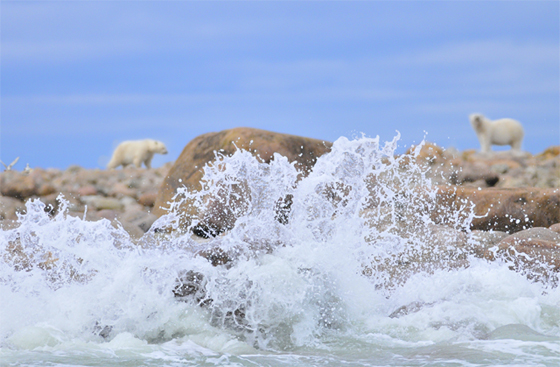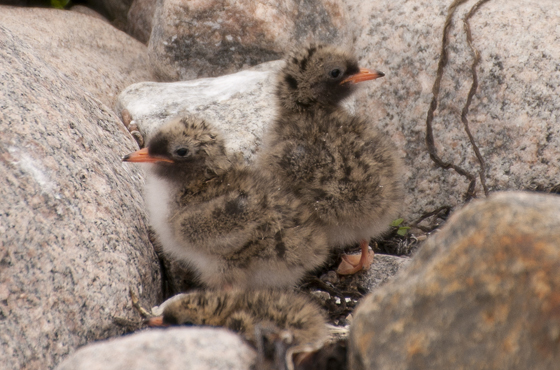Seal River Lodge recently hosted two individuals that could have a definite bearing on the future of Manitoba’s wilderness, and particularly on the Seal River watershed, while Oceans North was already at the Lodge doing beluga whale research.
It was a perfect storm of information gathering regarding the future of one of Manitoba’s vast unspoiled wilderness areas.
Ron Thiessen, Executive Director of The Manitoba Chapter of the Canadian Parks and Wilderness Society (CPAWS Manitoba) and the Honourable Thomas Nevakshonoff, Minister of Conservation and Water Stewardship for Manitoba, were both observing the beluga whale research being conducted by Oceans North Canada, while Nevakshonoff was additionally becoming more familiar with the Seal River area and of course, the polar bears and beluga whales.
Nevakshonoff, who was appointed Minister of Conservation and Water Stewardship for Manitoba on April 29, 2015, was learning more about the Seal River watershed, an area very dear to Thiessen, who through CPAWS is working with all stakeholders to protect nearly 50,000 square km of pristine Manitoba wilderness.
“I got to know him (Nevakshonoff) better,” said Thiessen. “And was able to introduce the Minister to the Seal River watershed and the region, while also explaining what we would like to protect. This is one of the few remaining intact watersheds on the planet and the Seal River is the last un-dammed free flowing river in Manitoba.”
“It was a great opportunity to plan ahead for the development of the area so that it benefits the people that live there. What we see sometimes in Canada is piece-meal development that eats away at the landscape. CPAWS would like to bring all the stake holders together and develop a plan in advance that is beneficial to everyone. It’s fairly rare in Canada, to be able to bring together all the groups in the planning process.
The Seal River watershed, including all the land and water that feeds the river both above and below, covers about eight percent of the Manitoba landscape in the boreal eco-zone. It’s a relatively unique area in that it is politically uncomplicated.
There’s no forestry, Manitoba Hydro has no interest in the area, and there are only a small number of mining claims and activity. Any planned development of the area could be done in such a way as to benefit local communities while also keeping the watershed intact as a tourist economy.
“There was a good amount of enthusiasm from the Conservation Minister,” said Thiessen. “I think he sees the value. And my sense is that he certainly sees the tourism opportunities. He sees that there is more room for tourism applications if done in harmony with the landscape — for a tourism-based economy that is based on the health of the landscape.”
Thiessen and the Minister of Conservation were at Seal River Lodge for three days, while Oceans North had already been there for a few weeks doing both beluga whale research and archeological work.
But it wasn’t ALL work.
“Sure I went in swimming with the belugas,” said Thiessen. “They tied my feet up, I hopped out of the boat, I sang my lungs out, and the belugas came right up to me. We saw polar bears, belugas, seals and waterfowl, including some Arctic tern chicks. We had some amazing sightings of polar bears on the rocks with the waves crashing into them. It was mind blowing. Definitely.”
“It’s a first rate Lodge. The service and the quality of the food was spectacular. We had a fabulous time.”
And accomplished a few things that will be of great benefit to Manitoba in the future.












